Ernest Hodgson9780471265085, 9780471646761, 047126508X
Table of contents :
Team DDU……Page 1
CONTENTS……Page 8
Preface……Page 22
Contributors……Page 24
I Introduction……Page 26
1.1.1 Definition and Scope……Page 28
1.1.3 A Brief History of Toxicology……Page 33
1.3 Sources of Toxic Compounds……Page 35
1.4 Movement of Toxicants in the Environment……Page 36
Suggested Reading……Page 37
2.2 Cell Culture Techniques……Page 38
2.2.3 Indicators of Toxicity in Cultured Cells……Page 39
2.3 Molecular Techniques……Page 41
2.3.2 cDNA and Genomic Libraries……Page 42
2.3.4 Polymerase Chain Reaction (PCR)……Page 43
2.4 Immunochemical Techniques……Page 44
Suggested Reading……Page 47
3.2 General Policies Related to Analytical Laboratories……Page 48
3.2.3 Procedural Manuals……Page 49
3.2.5 Laboratory Information Management System (LIMS)……Page 50
3.3.2 Quantitation Approaches and Techniques……Page 51
3.5 Quality Control (QC) Procedures……Page 52
Suggested Reading……Page 53
II Classes of Toxicants……Page 56
4.1.1 History……Page 58
4.1.2 Types of Air Pollutants……Page 59
4.1.3 Sources of Air Pollutants……Page 60
4.1.4 Examples of Air Pollutants……Page 61
4.1.5 Environmental Effects……Page 63
4.2.1 Sources of Water and Soil Pollutants……Page 65
4.2.2 Examples of Pollutants……Page 66
4.3.1 Regulation of Exposure Levels……Page 69
4.3.2 Routes of Exposure……Page 70
4.3.3 Examples of Industrial Toxicants……Page 71
Suggested Reading……Page 73
5.2.1 History……Page 74
5.2.2 Common Toxic Mechanisms and Sites of Action……Page 75
5.2.3 Lead……Page 76
5.2.5 Cadmium……Page 77
5.2.7 Arsenic……Page 78
5.3.1 Introduction……Page 79
5.3.2 Definitions and Terms……Page 80
5.3.3 Organochlorine Insecticides……Page 82
5.3.4 Organophosphorus Insecticides……Page 83
5.3.6 Botanical Insecticides……Page 85
5.3.8 New Insecticide Classes……Page 86
5.3.9 Herbicides……Page 87
5.3.11 Rodenticides……Page 88
5.4 Food Additives and Contaminants……Page 89
5.5.1 History……Page 90
5.5.3 Mycotoxins……Page 91
5.5.4 Algal Toxins……Page 92
5.5.6 Animal Toxins……Page 93
5.7 Therapeutic Drugs……Page 95
5.10 Cosmetics……Page 96
Suggested Reading……Page 98
III Toxicant Processing In vivo……Page 100
6.1 Introduction……Page 102
6.2 Cell Membranes……Page 103
6.3.1 Passive Diffusion……Page 105
6.3.2 Carrier-Mediated Membrane Transport……Page 108
6.4 Physicochemical Properties Relevant to Diffusion……Page 110
6.4.1 Ionization……Page 111
6.4.2 Partition Coefficients……Page 112
6.5.1 Extent of Absorption……Page 113
6.5.2 Gastrointestinal Absorption……Page 114
6.5.3 Dermal Absorption……Page 116
6.5.4 Respiratory Penetration……Page 119
6.6.1 Physicochemical Properties and Protein Binding……Page 122
6.6.2 Volume of Distribution (Vd )……Page 128
6.7 Toxicokinetics……Page 130
Suggested Reading……Page 134
7.1 Introduction……Page 136
7.2.1 The Endoplasmic Reticulum, Microsomal Preparation, and Monooxygenations……Page 137
7.2.2 The Cytochrome P450-Dependent Monooxygenase System……Page 138
7.2.3 The Flavin-Containing Monooxygenase (FMO)……Page 153
7.2.4 Nonmicrosomal Oxidations……Page 155
7.2.5 Cooxidation by Cyclooxygenases……Page 157
7.2.6 Reduction Reactions……Page 158
7.2.8 Epoxide Hydration……Page 160
7.2.9 DDT Dehydrochlorinase……Page 161
7.3 Phase II Reactions……Page 162
7.3.1 Glucuronide Conjugation……Page 163
7.3.3 Sulfate Conjugation……Page 164
7.3.4 Methyltransferases……Page 166
7.3.5 Glutathione S-Transferases (GSTs) and Mercapturic Acid Formation……Page 168
7.3.7 Acylation……Page 170
Suggested Reading……Page 173
8.1 Introduction……Page 174
8.2 Activation Enzymes……Page 175
8.3.1 Ultra-short-lived Metabolites……Page 176
8.3.3 Longer-lived Metabolites……Page 177
8.4.3 Trapping and Removal: Role of Glutathione……Page 178
8.6 Examples of Activating Reactions……Page 179
8.6.3 Methanol……Page 180
8.6.5 Carbon Tetrachloride……Page 181
8.6.6 Acetylaminofluorene……Page 182
8.6.8 Acetaminophen……Page 183
8.6.9 Cycasin……Page 184
8.7 Future Developments……Page 185
Suggested Reading……Page 186
9.2.1 Protein……Page 188
9.2.4 Micronutrients……Page 189
9.2.6 Nutritional Requirements in Xenobiotic Metabolism……Page 190
9.3.1 Development……Page 191
9.3.2 Gender Differences……Page 193
9.3.3 Hormones……Page 194
9.3.5 Disease……Page 196
9.4 Comparative and Genetic Effects……Page 197
9.4.1 Variations Among Taxonomic Groups……Page 198
9.4.3 Genetic Differences……Page 206
9.5 Chemical Effects……Page 209
9.5.1 Inhibition……Page 210
9.5.2 Induction……Page 215
9.6 Environmental Effects……Page 224
Suggested Reading……Page 226
10.1 Introduction……Page 228
10.3 Renal Elimination……Page 230
10.4 Hepatic Elimination……Page 232
10.4.1 Entero-hepatic Circulation……Page 233
10.4.2 Active Transporters of the Bile Canaliculus……Page 234
10.6 Conclusion……Page 235
Suggested Reading……Page 236
IV Toxic Action……Page 238
11.2 Acute Exposure and Effect……Page 240
11.3 Dose-response Relationships……Page 242
11.4 Nonconventional Dose-response Relationships……Page 244
11.5.2 Acetylcholinesterase Inhibition……Page 245
11.5.3 Ion Channel Modulators……Page 247
11.5.4 Inhibitors of Cellular Respiration……Page 248
Suggested Reading……Page 249
12.1 General Aspects of Cancer……Page 250
12.2.1 Causes, Incidence, and Mortality Rates of Human Cancer……Page 253
12.2.2 Known Human Carcinogens……Page 256
12.2.3 Classification of Human Carcinogens……Page 258
12.3 Classes of Agents Associated with Carcinogenesis……Page 261
12.3.1 DNA-Damaging Agents……Page 262
12.3.2 Epigenetic Agents……Page 264
12.4 General Aspects of Chemical Carcinogenesis……Page 265
12.5 Initiation-Promotion Model for Chemical Carcinogenesis……Page 266
12.6 Metabolic Activation of Chemical Carcinogens and DNA Adduct Formation……Page 268
12.7.1 Mutational Activation of Proto-oncogenes……Page 270
12.7.2 Ras Oncogene……Page 271
12.8.2 p53 Tumor Suppressor Gene……Page 272
12.9 General Aspects of Mutagenicity……Page 273
12.10 Usefulness and Limitations of Mutagenicity Assays for the Identification of Carcinogens……Page 274
Suggested Reading……Page 275
13.2 Principles of Teratology……Page 276
13.3 Mammalian Embryology Overview……Page 277
13.4 Critical Periods……Page 280
13.5.3 Diethylstilbestrol (DES)……Page 281
13.6 Testing Protocols……Page 282
13.6.2 International Conference of Harmonization (ICH) of Technical Requirements for Registration of Pharmaceuticals for Human Use (ICH)-US FDA, 1994……Page 283
Suggested Reading……Page 284
V Organ Toxicity……Page 286
14.1.2 Liver Function……Page 288
14.3.1 Fatty Liver……Page 289
14.3.5 Cirrhosis……Page 291
14.3.8 Carcinogenesis……Page 292
14.4 Mechanisms of Hepatotoxicity……Page 293
14.5.1 Carbon Tetrachloride……Page 294
14.5.3 Bromobenzene……Page 295
14.5.4 Acetaminophen……Page 296
Suggested Reading……Page 297
15.1.2 Function of the Renal System……Page 298
15.2 Susceptibility of the Renal System……Page 299
15.3.1 Metals……Page 300
15.3.3 Amphotericin B……Page 301
15.3.5 Hexachlorobutadiene……Page 302
Suggested Reading……Page 303
16.2 The Nervous system……Page 304
16.2.1 The Neuron……Page 305
16.2.2 Neurotransmitters and their Receptors……Page 307
16.2.3 Glial Cells……Page 308
16.2.4 The Blood-Brain Barrier……Page 309
16.2.5 The Energy-Dependent Nervous System……Page 310
16.3 Toxicant Effects on the Nervous System……Page 311
16.3.1 Structural Effects of Toxicants on Neurons……Page 312
16.3.2 Effects of Toxicants on Other Cells……Page 314
16.3.3 Toxicant-Mediated Alterations in Synaptic Function……Page 315
16.4.1 In vivo Tests of Human Exposure……Page 318
16.4.2 In vivo Tests of Animal Exposure……Page 320
16.4.3 In vitro Neurochemical and Histopathological End Points……Page 321
Suggested Reading……Page 322
17.2 Endocrine System……Page 324
17.2.1 Nuclear Receptors……Page 327
17.2.2 Membrane-Bound Steroid Hormone Receptors……Page 329
17.3.1 Hormone Receptor Agonists……Page 331
17.3.2 Hormone Receptor Antagonists……Page 333
17.3.3 Organizational versus Activational Effects of Endocrine Toxicants……Page 334
17.3.5 Inducers of Hormone Clearance……Page 335
17.4.1 Organizational Toxicity……Page 336
17.4.2 Activational Toxicity……Page 337
17.4.3 Hypothyroidism……Page 338
17.5 Conclusion……Page 339
Suggested Reading……Page 340
18.1.3 Function……Page 342
18.3.1 Irritation……Page 345
18.3.6 Cancer……Page 346
18.4.2 Monocrotaline……Page 347
18.4.3 Ipomeanol……Page 348
18.5 Defense Mechanisms……Page 349
Suggested Reading……Page 350
19.2 The Immune System……Page 352
19.3 Immune Suppression……Page 355
19.4 Classification of Immune-Mediated Injury (Hypersensitivity)……Page 360
19.5 Effects of Chemicals on Allergic Disease……Page 361
19.5.1 Allergic Contact Dermatitis……Page 362
19.5.2 Respiratory Allergens……Page 363
19.5.3 Adjuvants……Page 365
19.6 Emerging Issues: Food Allergies, Autoimmunity, and the Developing Immune System……Page 366
Suggested Reading……Page 367
20.2 Male Reproductive Physiology……Page 368
20.3.1 General Mechanisms……Page 369
20.3.5 Effects on Endocrine Function……Page 370
20.4 Female Reproductive Physiology……Page 371
20.5.1 Tranquilizers, Narcotics, and Social Drugs……Page 372
20.5.5 Effects on Sexual Behavior……Page 373
Suggested Reading……Page 374
VI Applied Toxicology……Page 376
21.1 Introduction……Page 378
21.2.1 Introduction……Page 380
21.2.2 Routes of Administration……Page 381
21.5 In vivo Tests……Page 383
21.5.1 Acute and Subchronic Toxicity Tests……Page 384
21.5.2 Chronic Tests……Page 395
21.5.3 Reproductive Toxicity and Teratogenicity……Page 396
21.5.4 Special Tests……Page 403
21.6.2 Prokaryote Mutagenicity……Page 410
21.6.3 Eukaryote Mutagenicity……Page 412
21.6.4 DNA Damage and Repair……Page 414
21.6.5 Chromosome Aberrations……Page 415
21.6.6 Mammalian Cell Transformation……Page 417
21.7 Ecological Effects……Page 418
21.7.2 Simulated Field Tests……Page 419
21.9 The Future of Toxicity Testing……Page 420
Suggested Reading……Page 421
22.2 Foundations of Forensic Toxicology……Page 424
22.4 Investigation of Toxicity-Related Death/Injury……Page 425
22.4.2 Considerations for Forensic Toxicological Analysis……Page 426
22.4.3 Drug Concentrations and Distribution……Page 427
22.5.3 Thin-Layer Chromatography (TLC)……Page 428
22.6 Analytical Schemes for Toxicant Detection……Page 429
22.7 Clinical Toxicology……Page 430
22.7.2 Basic Operating Rules in the Treatment of Toxicosis……Page 431
22.7.3 Approaches to Selected Toxicoses……Page 432
Suggested Reading……Page 434
23.2 Legislation and Regulation……Page 436
23.2.1 Federal Government……Page 437
23.2.3 Legislation and Regulation in Other Countries……Page 441
23.3.1 Home……Page 442
23.3.2 Workplace……Page 443
23.3.3 Pollution of Air, Water, and Land……Page 444
23.4 Education……Page 445
Suggested Reading……Page 446
24.1 Introduction……Page 448
24.2.1 Hazard Identification……Page 449
24.2.2 Exposure Assessment……Page 450
24.2.3 Dose Response and Risk Characterization……Page 451
24.3 Noncancer Risk Assessment……Page 452
24.3.1 Default Uncertainty and Modifying Factors……Page 453
24.3.2 Derivation of Developmental Toxicant RfD……Page 454
24.3.4 Benchmark Dose Approach……Page 455
24.3.5 Determination of BMD and BMDL for ETU……Page 456
24.3.7 Chemical Mixtures……Page 457
24.4 Cancer Risk Assessment……Page 458
24.5 PBPK Modeling……Page 461
Suggested Reading……Page 462
VII Environmental Toxicology……Page 464
25.1 Introduction……Page 466
25.2.1 Sampling……Page 467
25.2.3 Forensic Studies……Page 471
25.2.4 Sample Preparation……Page 472
25.2.5 Separation and Identification……Page 473
25.2.6 Spectroscopy……Page 480
25.2.7 Other Analytical Methods……Page 485
Suggested Reading……Page 486
26.1 Introduction……Page 488
26.2 Environmental Persistence……Page 489
26.2.2 Biotic Degradation……Page 490
26.2.3 Nondegradative Elimination Processes……Page 491
26.3 Bioaccumulation……Page 492
26.3.1 Factors That Influence Bioaccumulation……Page 494
26.4.1 Acute Toxicity……Page 495
26.4.2 Mechanisms of Acute Toxicity……Page 496
26.4.3 Chronic Toxicity……Page 497
26.4.4 Species-Specific Chronic Toxicity……Page 498
26.4.5 Abiotic and Biotic Interactions……Page 499
Suggested Reading……Page 502
27.1 Introduction……Page 504
27.2 Sources of Toxicants to the Environment……Page 505
27.3.1 Advection……Page 508
27.3.2 Diffusion……Page 510
27.4.1 Air–Water Partitioning……Page 512
27.4.3 Lipid–Water Partitioning……Page 513
27.4.4 Particle–Water Partitioning……Page 514
27.5.1 Reversible Reactions……Page 515
27.5.2 Irreversible Reactions……Page 518
27.6 Environmental Fate Models……Page 522
Suggested Reading……Page 523
28.1 Introduction……Page 526
28.2.1 Selecting Assessment End Points……Page 528
28.2.3 Selecting Measures……Page 531
28.3 Analyzing Exposure and Effects Information……Page 532
28.3.1 Characterizing Exposure……Page 533
28.3.2 Characterizing Ecological Effects……Page 535
28.4.2 Describing Risk……Page 537
28.5 Managing Risk……Page 541
Suggested Reading……Page 542
VIII Summary……Page 544
29.1 Introduction……Page 546
29.2 Risk Management……Page 547
29.5 In vivo Toxicity……Page 548
29.8 Development of Selective Toxicants……Page 549
Glossary……Page 550
Index……Page 568
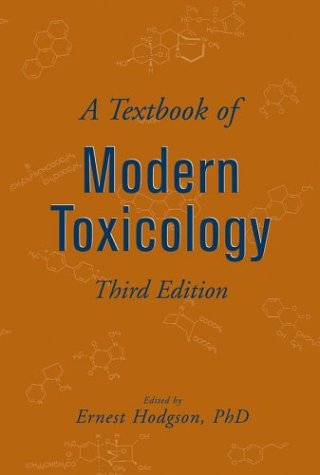
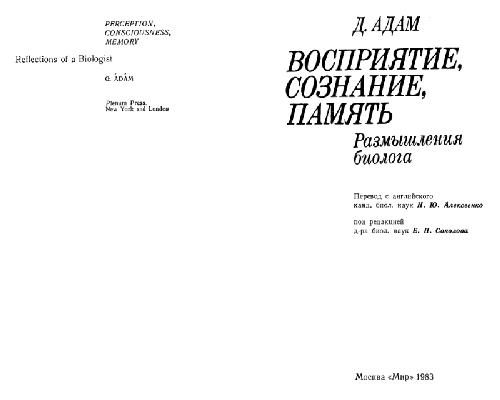
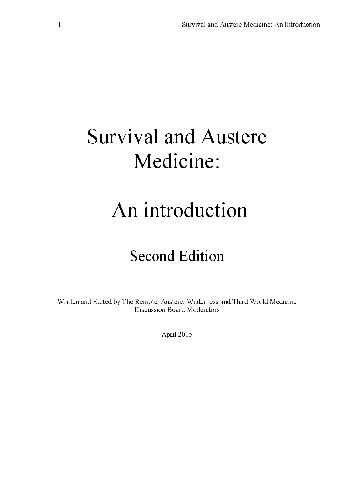
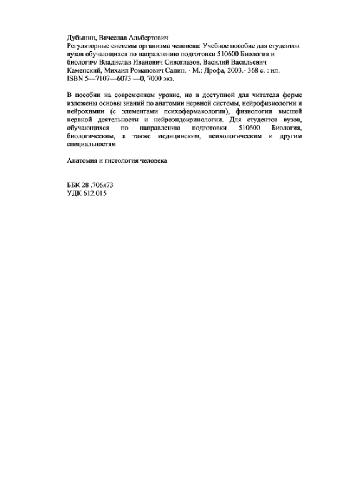


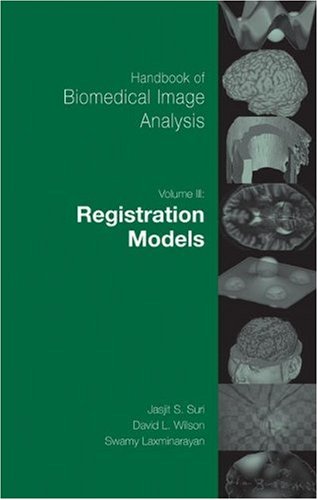
Reviews
There are no reviews yet.